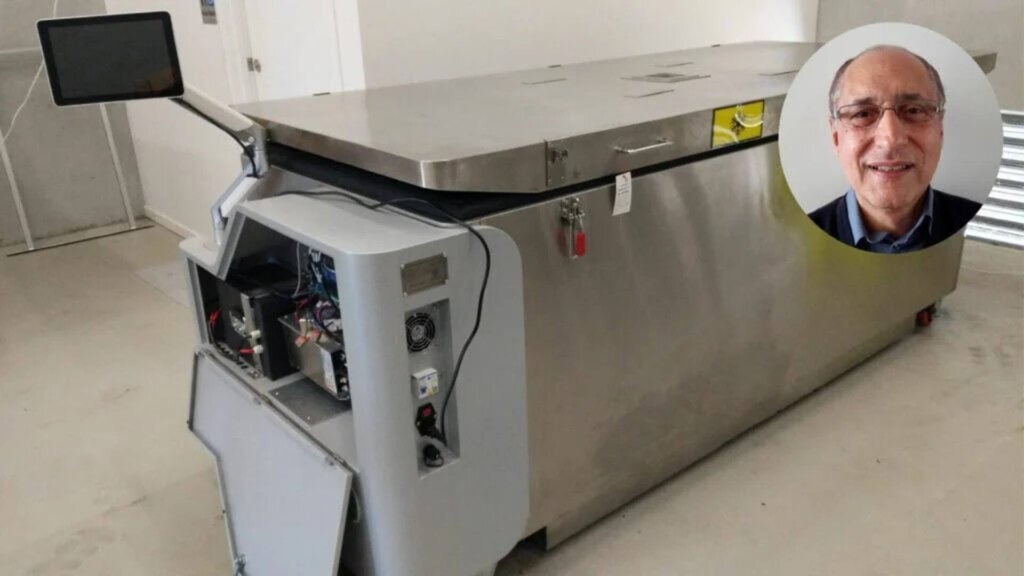A woman from Melbourne has become the second person to undergo cryopreservation at Southern Cryonics, Australia’s first and only cryonics facility and the first of its kind in the Southern Hemisphere.
Her body, legally declared dead on July 4 after battling chronic illness, now rests in a liquid nitrogen chamber at -200°C in Holbrook, NSW, awaiting a possible future revival.
Often in the province of science fiction, cryonics is a controversial method whereby deceased bodies are preserved at ultra-low temperatures in the hope that scientific advancements will one day allow for their revival.
Peter Tsolakides, a Greek Australian and managing director of Southern Cryonics, has led the vision since its inception.
In a past interview with Neos Kosmos, he revealed that 35 early “investors” contributed between $50,000 and $70,000 each to help launch the facility. Today, the centre has 32 active “subscribers,” each paying $350 annually and committing to pay approximately $170,000 for the procedure.
“Most people who choose this path understand there are no guarantees,” said Tsolakides.
“But they believe there’s at least a chance. And compared to burial or cremation, even a small chance is worth something.”
Clients sign agreements specifying the terms of their preservation and are required to opt out of autopsies to avoid potential damage and delays in the cryopreservation process.
The concept has seen over 600 people worldwide cryopreserved so far. Southern Cryonics currently has the capacity for 40 bodies. According to Tsolakides, their members range from ages 15 to 95 and come from all walks of life, from doctors to bus drivers.
“Most aren’t looking for immortality. They simply want the opportunity to live longer and perhaps witness the future,” said Tsolakides.
Scientific scepticism remains
Despite on-going public fascination and growing interest, particularly among science fiction enthusiasts, the scientific community remains largely unconvinced.
Dr Saffron Bryant, a cryopreservation specialist at RMIT, expressed concern over the limitations of current technology. Speaking to the ABC, she clarified that while individual cells and very simple tissues can be frozen, we are still far from preserving and safely reviving complex organs or entire bodies.
“At present, we can’t even reliably store a whole organ,” she said, noting that ice formation inside cells during freezing causes damage.
To mitigate this, scientists use cryoprotective agents—chemicals that reduce ice formation—but these are not universally effective.
“Organs are composed of many types of cells, each requiring different protection,” Dr Bryant said.
“This complexity makes it nearly impossible to preserve them all safely with a single method.”
She added that if the technology were advanced enough, it would already be used to address critical challenges like organ donor shortages.
“Unfortunately, the technology to freeze and revive whole organs or bodies just doesn’t exist yet.”








